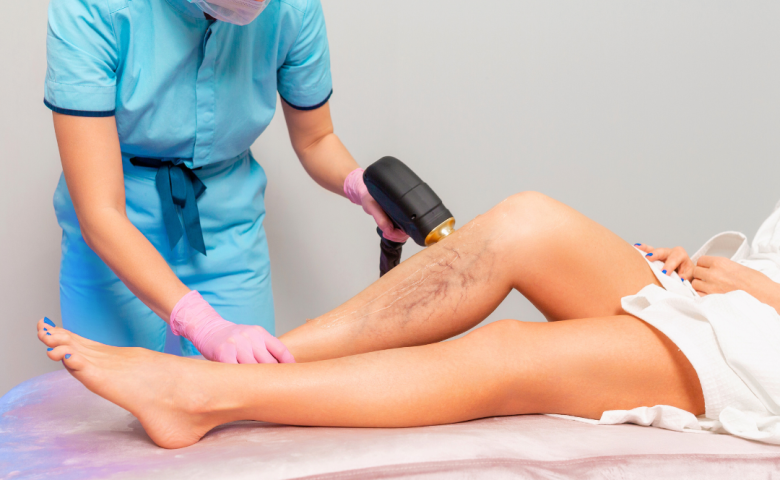Fibroids Begone! How to Tackle Uterine Fibroids with Prospero Vascular in the East Bay

The Unwelcome Guests in Your Uterus – Fibroids!
We’ve all had those uninvited guests who show up, stay too long, and make themselves entirely too comfortable. Now, imagine that guest is living rent-free inside your uterus. Yup, we’re talking about uterine fibroids. No, it’s not a new trend or some sort of fertility decoration, it’s a medical condition affecting 80% of women by age 50. While uterine fibroids are typically benign, they sure know how to mess with your comfort—sometimes causing heavy periods, bloating, and even fertility issues.
Now, before you get too freaked out, here’s the good news: uterine fibroids are treatable. We, at Prospero Vascular in the East Bay specialize in helping women tackle these pesky uterine fibroids with minimally invasive treatments that’ll have you feeling better in no time.
What Are Uterine Fibroids? Let’s Break It Down
If you’ve been told you have uterine fibroids, you may have wondered exactly what’s going on. Well, uterine fibroids are non-cancerous tumors that develop in the uterus. They are made up of muscle and fibrous tissue. While they’re typically harmless, they can grow in size and number, causing all sorts of inconvenient issues.
Picture this: your uterus is like a cozy, well-organized apartment. Then, imagine a bunch of squatters—uterine fibroids—move in and start rearranging your furniture, causing chaos and cramping your space. The uterine fibroids might not even knock on your door until they’re big enough to create real problems.
Variety of shapes and sizes:
• Subserosal Fibroids: These bad boys grow on the outer part of the uterus and can get really big, often putting pressure on nearby organs like your bladder (hello, frequent bathroom trips).
• Intramural Fibroids: These are embedded in the uterine wall and can mess with your flow—literally. Think heavy periods and pelvic pain.
• Submucosal Fibroids: Found inside the uterus, these can cause the most issues, especially if you’re trying to conceive, as they can interfere with implantation.
Now, before you start panicking, the majority of women won’t even need treatment. But if those uterine fibroids start making life uncomfortable (think pain, heavy bleeding, frequent urination), that’s when it’s time to get rid of them—and we’ve got you covered.
How Do You Know If You Have Uterine Fibroids? Symptoms That Speak Louder Than Words
Let’s be honest: uterine fibroids can be a real nuisance when they decide to act up. Symptoms vary depending on the size and location, but here are the most common signs that your uterus might be holding a fibroid party:
• Heavy Menstrual Bleeding: If you’re going through pads and tampons like they’re going out of style, uterine fibroids could be the culprit. They tend to make your period heavier and longer than usual—basically, making you feel like you’re on a never-ending cycle of “who needs to leave the house today?”
• Pelvic Pain and Pressure: Imagine someone pressing down on your pelvis all the time. Depending on the location, you may be feeling discomfort, bloating, and fullness in your abdomen.
• Frequent Urination: If you feel like you’ve got to hit the bathroom every 10 minutes, uterine fibroids may be to blame. They can press on your bladder, giving you the urge to go more often than you’d like.
• Back Pain: When uterine fibroids press on your spine or surrounding nerves, you might feel like you’ve been carrying a heavy bag around all day, and your lower back starts to act up.
• Bloating: If you’ve been feeling like you’re “puffier” than usual, uterine fibroids could be the reason. They can cause bloating in the lower abdomen and give you that “I-ate-a-whole-pizza” feeling—without any of the fun.
So, if you’re experiencing any of these symptoms, it’s time to schedule a visit to Prospero Vascular to figure out what’s going on. Ignoring it might not just mean more discomfort, but could also lead to complications down the line, especially if you’re planning to start a family.
The Big Concern: Can Uterine Fibroids Affect Fertility and Pregnancy?
One of the top questions women have is whether or not they’ll affect their fertility or ability to have children. While it’s true that uterine fibroids can interfere with fertility and make pregnancy more challenging, the good news is that most women can still get pregnant and carry a healthy baby to term.
In fact, many women with uterine fibroids don’t even experience any issues with fertility or pregnancy. However, if you’ve been trying to conceive for a while and uterine fibroids are making things harder, it’s important to address them. It’s also worth noting that if you already have uterine fibroids and you’re pregnant, they might increase the risk of complications, such as miscarriage, preterm labor, or placental issues, although many women still go on to have healthy pregnancies.
So, the best course of action is to get them treated before you start trying for a baby. The earlier you take care of things, the better chance you’ll have for a smooth and successful pregnancy.
Treatment Options at Prospero Vascular: Kick Those Uterine Fibroids to the Curb
If you’re tired of playing host to your “unwanted guests,” it’s time to consider treatment. The good news is that there are several effective options available at Prospero Vascular to help you get rid of these troublesome visitors without the need for a hysterectomy.
Uterine Fibroid Embolization (UFE): Starve the Fibroids, Save Your Uterus
If uterine fibroids are taking over your life—causing heavy bleeding, pelvic pain, or bloating—Uterine Fibroid Embolization (UFE), also known as Uterine Artery Embolization (UAE), offers a safe, non-surgical way to take back control. This minimally invasive treatment works by cutting off the blood supply to fibroids, causing them to shrink, soften, and gradually die off. Think of it as putting your fibroids on a permanent “no-nourishment” plan—no crash diets, just science-backed results.
What Is UFE/UAE and How Does It Work?
UFE is performed by an interventional radiologist using real-time imaging guidance. Through a tiny incision—usually in the wrist or groin—a catheter is inserted into the uterine arteries. Tiny particles are then injected to block the vessels feeding the fibroids, while leaving the uterus and surrounding tissue unharmed. The result? Fibroids shrink, symptoms improve, and your quality of life returns.
Why UFE/UAE Is a Game-Changer
- ✅ Minimally Invasive: No surgical incision, no stitches, and no general anesthesia.
- ✅ Preserves the Uterus: A fertility-sparing alternative to hysterectomy.
- ✅ Quick Recovery: Most women go home the same day and return to regular activities within 7–10 days.
- ✅ Effective Symptom Relief: Proven to reduce heavy menstrual bleeding, pelvic pressure, and bulk-related symptoms in up to 90% of patients.
- ✅ Lower Risk of Complications: Compared to traditional surgery, UFE has fewer risks and less downtime.
Is UFE Right for You?
UFE is ideal for women who want relief from fibroid symptoms without the risks of surgery or the long recovery of a hysterectomy or myomectomy. It’s particularly helpful for those who:
- Have multiple fibroids or fibroids too large for surgery
- Want to avoid hormone therapy or aren’t candidates for surgery
- Wish to preserve their uterus for personal or reproductive reasons
Take the First Step Toward Relief
If you’re ready to stop letting fibroids control your life, UFE could be the solution you’ve been searching for. At PVI, we specialize in advanced, image-guided procedures like UFE that offer real results with minimal disruption to your daily life. Schedule a consultation today to find out if you’re a candidate—and say goodbye to your fibroids for good.
Recovery: What to Expect After Treatment
Whether you go with UAE, myomectomy, or hysterectomy, recovery varies, but the good news is that most women experience minimal downtime. For UAE, you’ll be back on your feet in about a week, while for myomectomy and hysterectomy, recovery can take a few weeks. Either way, we’re here to guide you through the process and get you feeling your best again.
Why Choose Prospero Vascular?
You are in expert hands at Prospero Vascular. We offer a variety of non-invasive and minimally invasive treatment options tailored to your needs. Whether you’re looking to preserve your fertility or simply get rid of the symptoms, we’re here to help you every step of the way.
Final Thoughts: Take Action and Take Control
You don’t have to live with the discomfort. Whether you’re tired of the heavy bleeding, pain, or worried about your fertility, treatment is available, and it’s time to take action.
Contact us today at Prospero Vascular to schedule a consultation, and let’s discuss your options for a fibroid-free future. Your uterus deserves a little peace and quiet, and we’re here to help you reclaim it.



